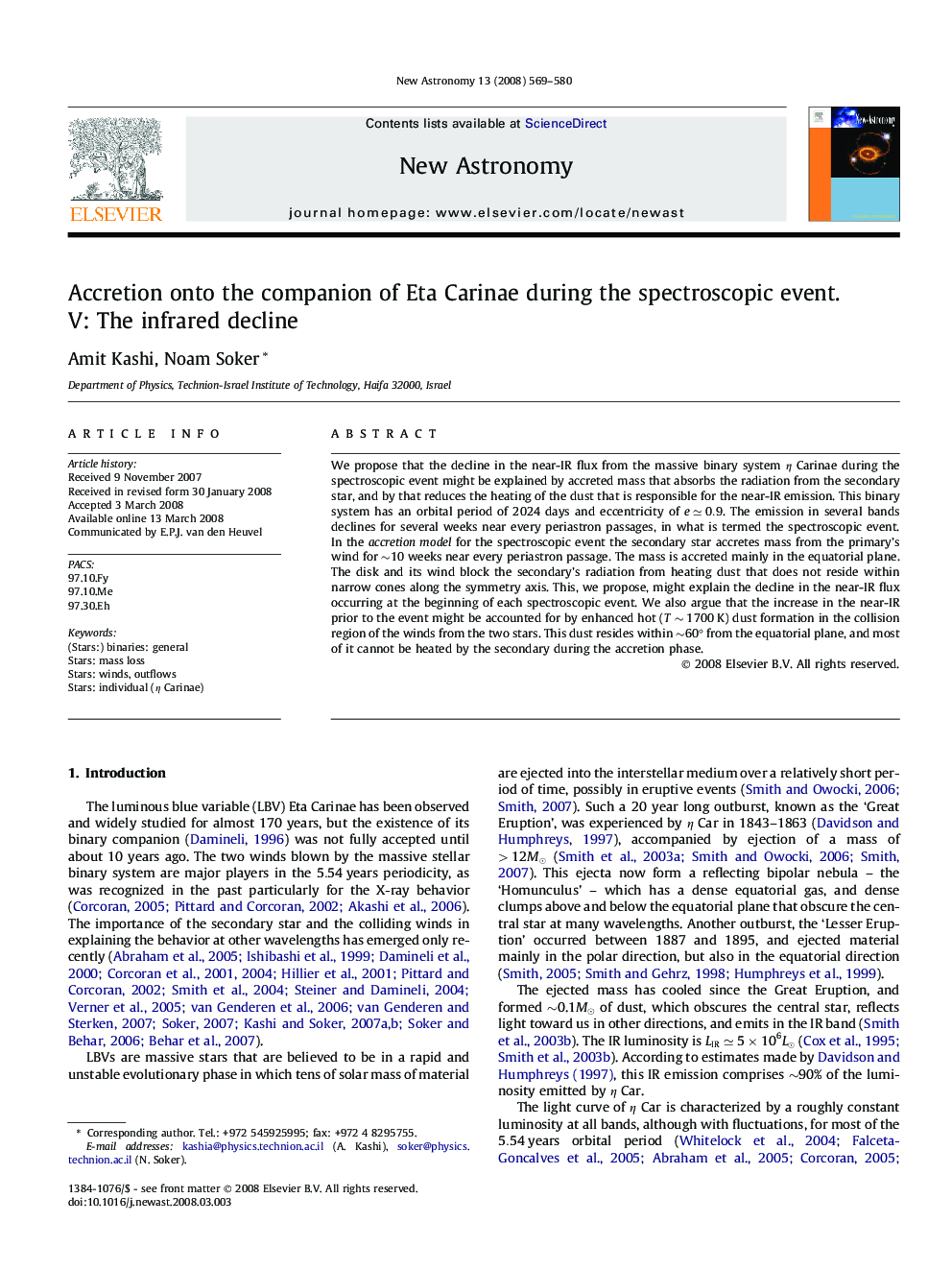| کد مقاله | کد نشریه | سال انتشار | مقاله انگلیسی | نسخه تمام متن |
|---|---|---|---|---|
| 1779663 | 1022015 | 2008 | 12 صفحه PDF | دانلود رایگان |
عنوان انگلیسی مقاله ISI
Accretion onto the companion of Eta Carinae during the spectroscopic event. V: The infrared decline
دانلود مقاله + سفارش ترجمه
دانلود مقاله ISI انگلیسی
رایگان برای ایرانیان
کلمات کلیدی
موضوعات مرتبط
مهندسی و علوم پایه
فیزیک و نجوم
نجوم و فیزیک نجومی
پیش نمایش صفحه اول مقاله

چکیده انگلیسی
We propose that the decline in the near-IR flux from the massive binary system η Carinae during the spectroscopic event might be explained by accreted mass that absorbs the radiation from the secondary star, and by that reduces the heating of the dust that is responsible for the near-IR emission. This binary system has an orbital period of 2024 days and eccentricity of eâ0.9. The emission in several bands declines for several weeks near every periastron passages, in what is termed the spectroscopic event. In the accretion model for the spectroscopic event the secondary star accretes mass from the primary's wind for â¼10 weeks near every periastron passage. The mass is accreted mainly in the equatorial plane. The disk and its wind block the secondary's radiation from heating dust that does not reside within narrow cones along the symmetry axis. This, we propose, might explain the decline in the near-IR flux occurring at the beginning of each spectroscopic event. We also argue that the increase in the near-IR prior to the event might be accounted for by enhanced hot (Tâ¼1700K) dust formation in the collision region of the winds from the two stars. This dust resides within â¼60° from the equatorial plane, and most of it cannot be heated by the secondary during the accretion phase.
ناشر
Database: Elsevier - ScienceDirect (ساینس دایرکت)
Journal: New Astronomy - Volume 13, Issue 8, November 2008, Pages 569-580
Journal: New Astronomy - Volume 13, Issue 8, November 2008, Pages 569-580
نویسندگان
Amit Kashi, Noam Soker,